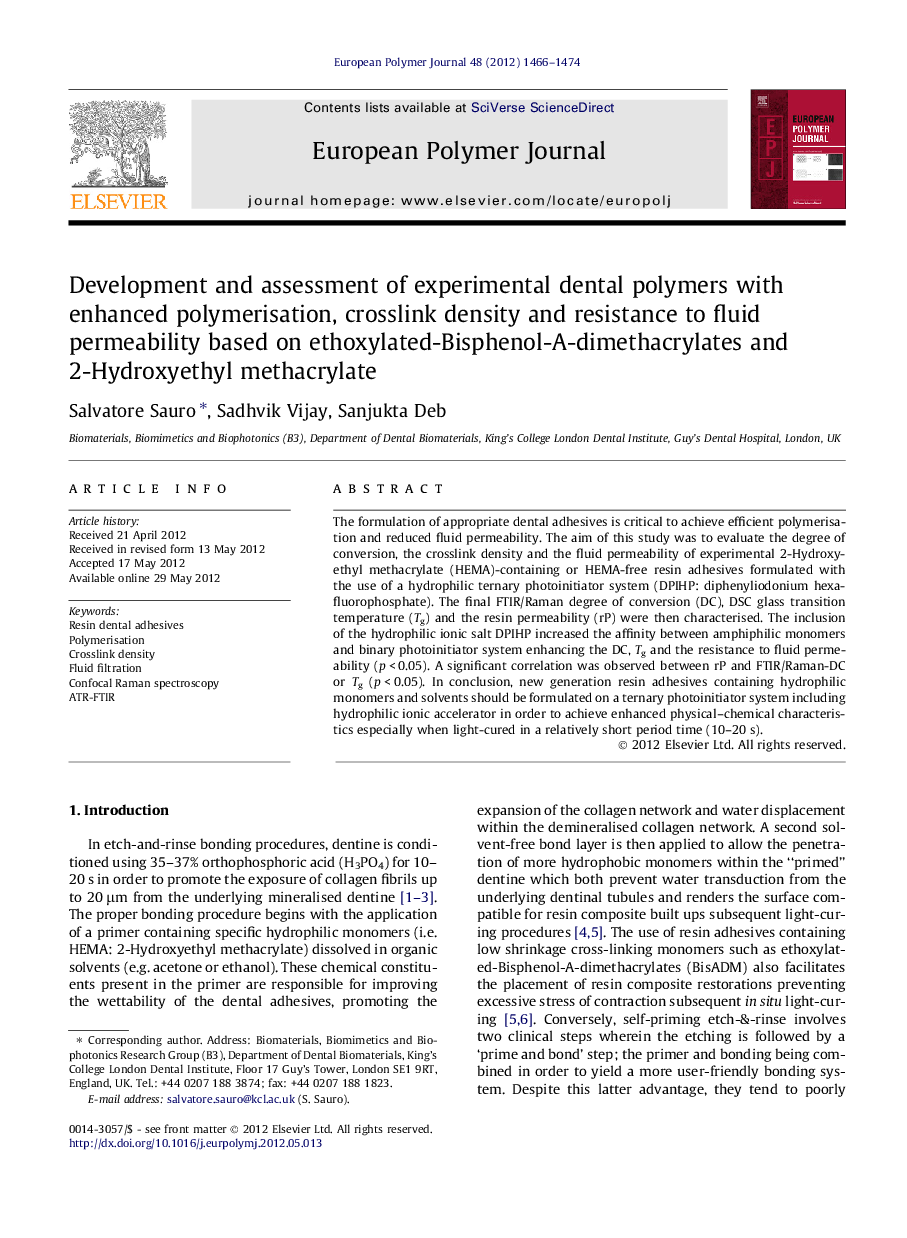| Article ID | Journal | Published Year | Pages | File Type |
|---|---|---|---|---|
| 1398311 | European Polymer Journal | 2012 | 9 Pages |
The formulation of appropriate dental adhesives is critical to achieve efficient polymerisation and reduced fluid permeability. The aim of this study was to evaluate the degree of conversion, the crosslink density and the fluid permeability of experimental 2-Hydroxyethyl methacrylate (HEMA)-containing or HEMA-free resin adhesives formulated with the use of a hydrophilic ternary photoinitiator system (DPIHP: diphenyliodonium hexafluorophosphate). The final FTIR/Raman degree of conversion (DC), DSC glass transition temperature (Tg) and the resin permeability (rP) were then characterised. The inclusion of the hydrophilic ionic salt DPIHP increased the affinity between amphiphilic monomers and binary photoinitiator system enhancing the DC, Tg and the resistance to fluid permeability (p < 0.05). A significant correlation was observed between rP and FTIR/Raman-DC or Tg (p < 0.05). In conclusion, new generation resin adhesives containing hydrophilic monomers and solvents should be formulated on a ternary photoinitiator system including hydrophilic ionic accelerator in order to achieve enhanced physical–chemical characteristics especially when light-cured in a relatively short period time (10–20 s).
Graphical abstractFigure optionsDownload full-size imageDownload as PowerPoint slideHighlights► Adhesives containing hydrophilic monomers and solvents should be formulated using onium salts. ► Onium salts are useful initiators for cationic polymerisation soluble in hydrophilic monomers. ► Higher photo-polymerisation can be achieved in short period due to the presence of onium salts. ► Onium salts reduce the fluid permeability of resin adhesives light-cured in short period time. ► In a clinical scenario HEMA-containing adhesives should be light-cured for a period exceeding 60 s.
